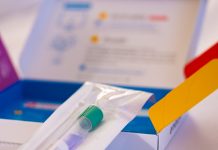A study released in Proceedings of the National Academy of Science on December 9, 2019 discovered that devices containing LCD technology (such as smartphones, tv, and computer monitors) are shedding toxic chemicals that can be detected in the dust lying around the rooms in which the devices are found.
LCD is short for liquid crystal monomers, and they have become important components of some of our most beloved technology. You can find them in flat screen TV monitors, smartphones, computer monitors, and even in solar panels. The monomers are in a semi-liquid state, and this isn’t the first time they have gotten attention—these monomers can be released into the environment during the manufacturing process. Recycling products containing these monomers can release them into the environment, too; along with being vaporized during incineration. What makes this recent study so important, however, is that now we are aware that they are being released into the immediate environment just from typical, daily use.
The study was conducted in two parts. First, the research team compiled a list of 362 of the most common LCDs across 10 separate industries where you would commonly find LCDs used in production of technology and tested them in the lab for toxicity profiles. They also tested LCDs found in the 6 most common smartphones on the market today. Secondly, the researchers tested dust lying around 7 buildings in China (representing different, commonly-encountered buildings such as a standard home, hotel, school, lab, student dorm, cafeteria, and an electronic repair business). They took 53 samples of dust.
During the lab portion of the study, the researchers detected that the monomers from the smartphones interfered with the ability of animals to digest nutrients and could potentially disrupt organ systems (especially the thyroid and gallbladder). These results share the potentially hazardous status of other chemicals, such as flame retardants and dioxins, which are well-known to produce toxic effects both on humans and animals. In all, the team analyzed 300 different chemicals and confirmed that approximately 100 of the LCD chemicals can cause toxicity.
When the scientists analyzed the dust samples, they discovered that almost half of 53 samples collected contained liquid crystal monomers (LCDs). Not only have LCDs made their way into the environment during disposal or recycling, but now we are beginning to understand that we are coming into contact with these chemicals daily—and with no regulatory standards for LCDs created to control or protect the consumer, we should be watchful for further studies.
References
Su, Huijun, et al. “Persistent, Bioaccumulative, and Toxic Properties of Liquid Crystal Monomers and Their Detection in Indoor Residential Dust.” PNAS, vol. 116, no. 52, 9 Dec. 2019, pp. 26450–26458., doi:https://doi.org/10.1073/pnas.1915322116.



































